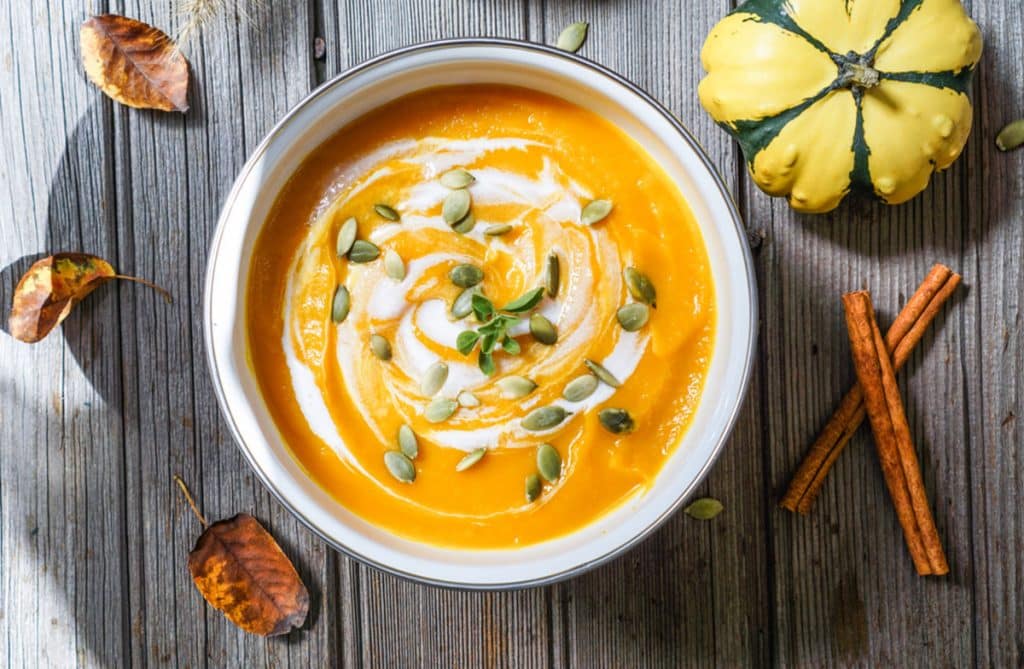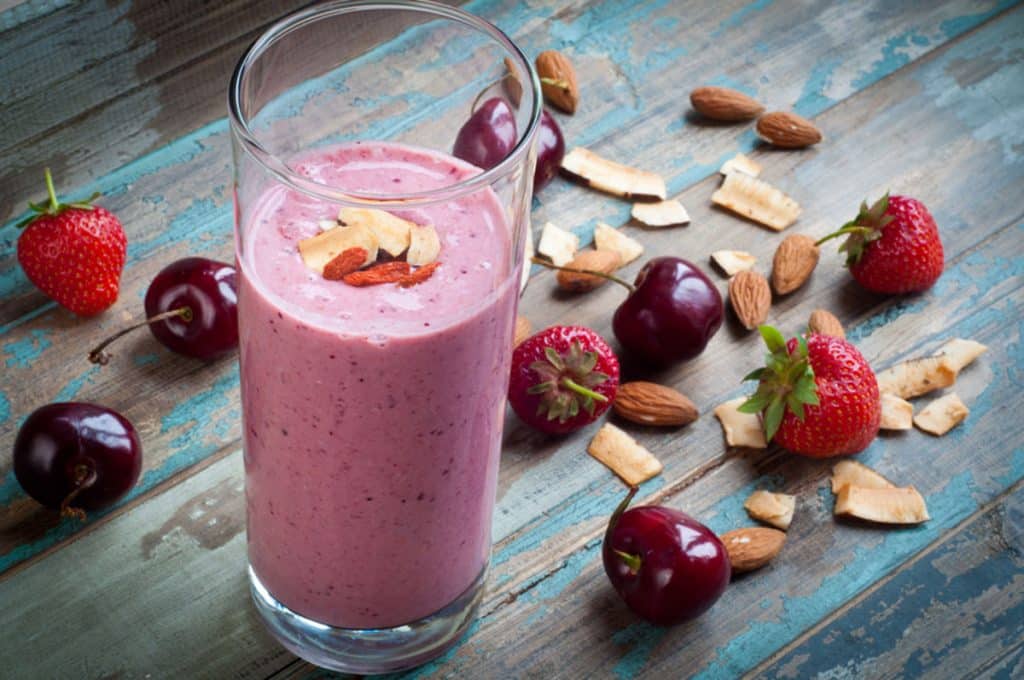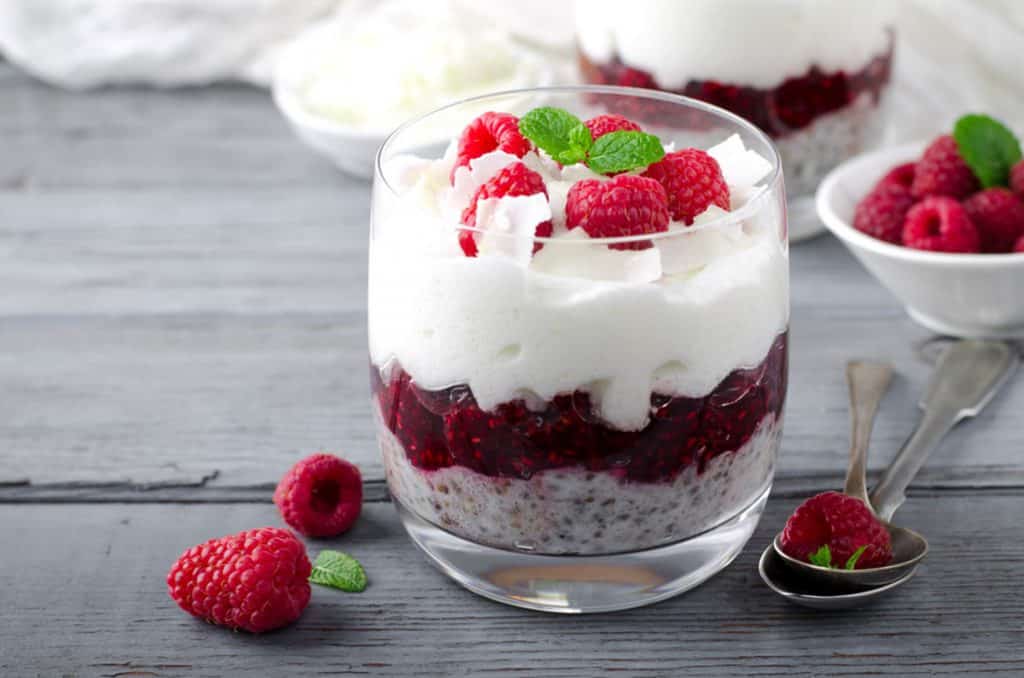With its super rich and velvety texture, coconut milk is often considered as a fattening, ‘artery clogging’ villain that should be avoided at all costs. But the truth is that real coconut milk is (amazingly delicious) and jam-packed with health benefits. If you’re not convinced, check out this article to learn about how coconut milk can benefit your health and the best ways to use it. You’ll also discover how to save money by making it at home and instances when this delightful liquid may be more of a foe.
What exactly is coconut milk?
Naturally dairy free, coconuts do not contain any milk in the sense that we normally think of it. In fact, coconut milk is traditionally made by prying the coconut meat from the husk, grating and pressing the coconut flesh before mixing it with water.
There are various grades of coconut milk:
- Thick coconut milk also referred to as ‘full-fat coconut milk’ and usually simply labeled ‘coconut milk’ on cans and cartons. This type of coconut milk is the first liquid obtained from the squeezed grated coconut milk. It typically contains between 20 to 22% of fat.
- Thin coconut milk is labeled ‘light coconut milk’ or ‘low fat’ since it contains only 5 to 7% of fat. Thin coconut milk is produced by soaking the grated coconut that remains after thick coconut milk is produced.
Note: To reap all the health benefits of coconut milk, never use thin coconut milk (which is tasteless anyway).
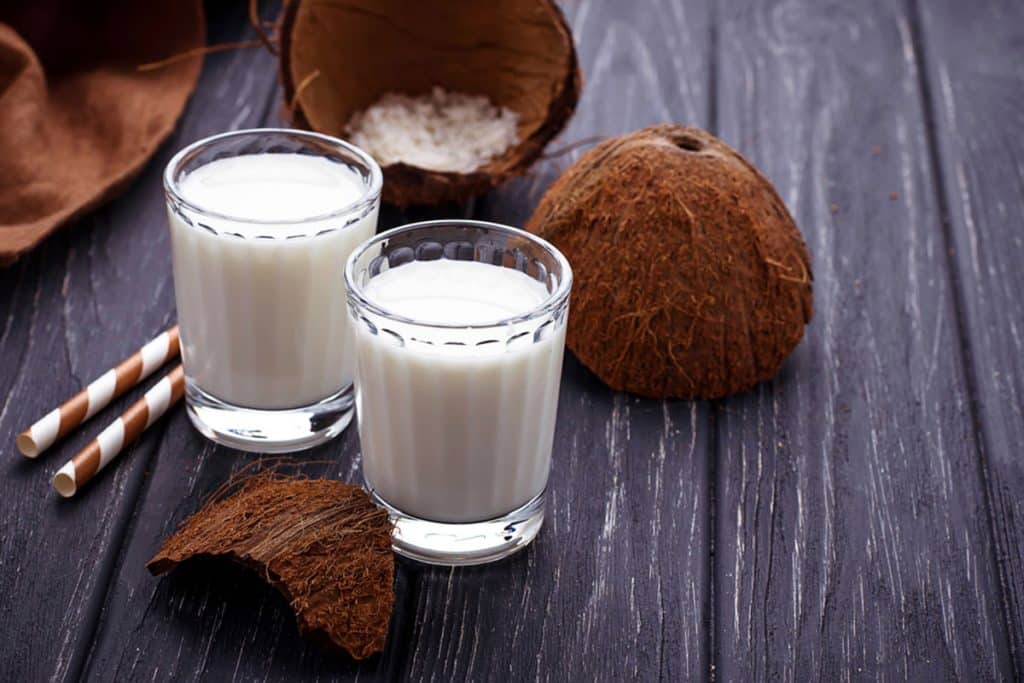
Coconut milk nutrition
According to the USDA National Nutrient database, a quarter cup (60g) of raw, unsweetened, full-fat coconut milk expressed from grated milk and water contains:
- 138 calories
- 37g of protein
- 3g of fat which includes 12.7g of saturated fats, 0.61g of monounsaturated fats, 0.16g of polyunsaturated fats and 0mg of cholesterol
- 32g of carbohydrate which includes 1.3g of dietary fiber and 2.0g of sugar
- 158mg of potassium
- 60mg of phosphorus
- 22mg of magnesium
- 10mg of calcium
- 9mg of iron
- 55mg of manganese
- 15mg of copper
Proven health benefits of coconut milk
About 60% of coconut fat is made up of medium chain triglycerides (MCTs) and most of the impressive health attributes of coconut milk can be traced back to these MCTs. That’s why you want the full-fat version of coconut milk.
You see, MCTs are very different from other types of fats. Unlike longer chain fatty acids, MCTs can be passively absorbed by the body without the need for bile salts. When you consume a food that contains MCTs, these MCTs travel directly from the digestive tract to the liver. Once there, the body either immediately uses the MCTs for energy or converts them into ketone bodies instead of storing them as fat.

1. Helps tone down inflammation
Did you know that chronic inflammation is often (if not always) the root cause of most chronic diseases?
Sure, you could pop anti-inflammatory pills. But these come with loads of nasty side effects. So, wouldn’t it make sense to eliminate dietary factors that cause the inflammation in the first place? And, in parallel, increase your intake of foods that naturally tone down inflammation?
Well, researchers suggest that the various antioxidants present in the fats of the coconut may help lower inflammation. In a lab study, arthritis was induced in rats. These rats were then given some virgin coconut oil. The researchers reported that the antioxidants in the oil helped decrease the production of inflammatory molecules and facilitated healing.
[color-box color=”main”]Take home message: Consuming full-fat coconut milk can reduce symptoms and health complications caused by inflammation. [/color-box]

2. Promotes muscle growth and facilitates fat loss
You’re probably thinking ‘What? A high-fat food can help the body burn fat?’
Yes. In fact, in a 12-week study, researchers gave women 30ml of either soybean oil or coconut oil. Both groups were instructed to eat less and walk for 50 minutes per day. At the end of the study, both groups had lost weight. However, the participants given coconut milk had lost visceral fat (fat around their organs). That’s the type of fat that increases the risk of chronic diseases. On the other hand, those who consumed soybean oil gained visceral fat!
You see, the fat in coconut milk is not just any type of fat. Research suggests that the MCTs in coconuts can help:
- Rev up your metabolism (the amount of energy the body uses when it is at rest). In one clinical study, MCTs were found to increase energy expenditure by 5% or around 120 calories per day. Put simply, MCTs can help your body use more energy even when you’re resting. (Now, I’m not saying that you should pour yourself a tall glass of coconut milk and then sleep the whole day. Coconut milk is not a magic food but it can facilitate body fat loss if your overall lifestyle and diet are healthy.)

- Nourish muscles and speed up muscle recovery after exercise. As part of a healthy lifestyle, coconut milk can make it easier for you to increase your muscle mass. This will, in turn, increase your metabolism and facilitate loss of excess body fat.
- Make you feel full faster and longer. As mentioned earlier, the liver can produce ketone bodies using the MCTs from coconuts. And guess what? Researchers speculate that these ketone bodies can considerably reduce the appetite. Plus, MCTs help balance hormones that control the appetite.
[color-box color=”main”]Take home message: When consumed as part of a healthy diet and lifestyle, the MCTs in coconut milk can facilitate loss of excess body fat. MCTs help your body burn more energy while regulating hormones that make you hungry. [/color-box]

3. Protects the heart & improves insulin resistance
Despite what many people say, coconut milk and oil will not clog your arteries. Nor will it cause you to die from a heart attack. In fact, did you know that countries with the highest intake of coconut oil have the lowest rates of heart disease?
It is true that the saturated fats in the coconut will increase your cholesterol levels. But, that’s not the whole story. As a dietitian, I always tell my patients that high cholesterol levels only become an issue when the following occur together:
- The LDL particles are small and dense – this type of particles can triple the risk of heart disease.
- Triglyceride levels are high. These fats increase when the diet is high in carbohydrates but low in healthy fats.
- Inflammation levels are high.
And guess what?
Research has found that, although the fats in coconuts are about 40% saturated, consuming coconuts can help:
- Increase HDL-cholesterol, the type of cholesterol that can protect the heart
- Decrease triglyceride levels
- Lower levels of small, dense LDL particles
- Reduce inflammation which increases the risks of heart disease
- Improve insulin resistance – this further protects against heart disease
[color-box color=”main”]Take home message: A cheeseburger contains saturated fats. So do coconuts. But the saturated fats in coconuts are very different. Saying otherwise is like saying that the carbohydrates in broccoli are like those in a cookie.[/color-box]

4. Can speed up ulcer healing & reduce risks of stomach cancer
Many people still believe that ulcers are caused by stomach acid ‘eating away the stomach’s walls’. But that’s a myth. Helicobacter pylori is the unfriendly bacteria that causes ulcers and increases the risks of stomach and intestinal cancers.
People with ulcers are often told to avoid all fatty foods including coconuts. And that’s not necessarily good advice since the major fatty acid present in coconut milk is lauric acid. Studies suggest that lauric acid possesses antimicrobial, antibacterial and antiviral properties.
Scientists explain that MCTs can break down the walls of the Helicobacter pylori bacteria which die when exposed to lauric acid.
[color-box color=”main”]Take home message: Coconut milk can help reduce stomach ulcer size by about 56% thanks to its antimicrobial properties.[/color-box]

5. Can help combat fatigue
Since MCTs can be used easily by the body, they provide a rapid source of energy. Moreover, coconut milk is also a good source of magnesium which is famous for its anti-fatigue properties. One of my patients, a teenage athlete, reported recovering faster after swimming competitions when he fuels up with raw coconut milk and raw honey before events.
[color-box color=”main”]Take home message: The MCTs and magnesium in coconut milk can rapidly boost your energy levels without causing any energy crash afterward.[/color-box]
6. Can improve gut function & reduce intolerances
Besides helping to reduce inflammation in the digestive tract, MCTs in coconut milk promote:
- Gut healing by helping the body replace worn out or damaged cells in the digestive tract.
- Mucus production – this is terrific for gut health since mucus helps protect the lining of the digestive tract against stressors like harmful bacteria.
Plus, coconut milk is a good source of zinc which is known to boost the immune system. And that’s not all, by helping to increase the activity of diamine oxidase, the histamine-clearing enzyme, coconut milk could help offer some relief against histamine intolerance.
[color-box color=”main”]Take home message: Coconut milk can help enhance immune function and promotes healing of the digestive tract.[/color-box]
Ready to buy yourself a few cans of coconut milk? Wait, before you do, be sure to read the rest of this article.
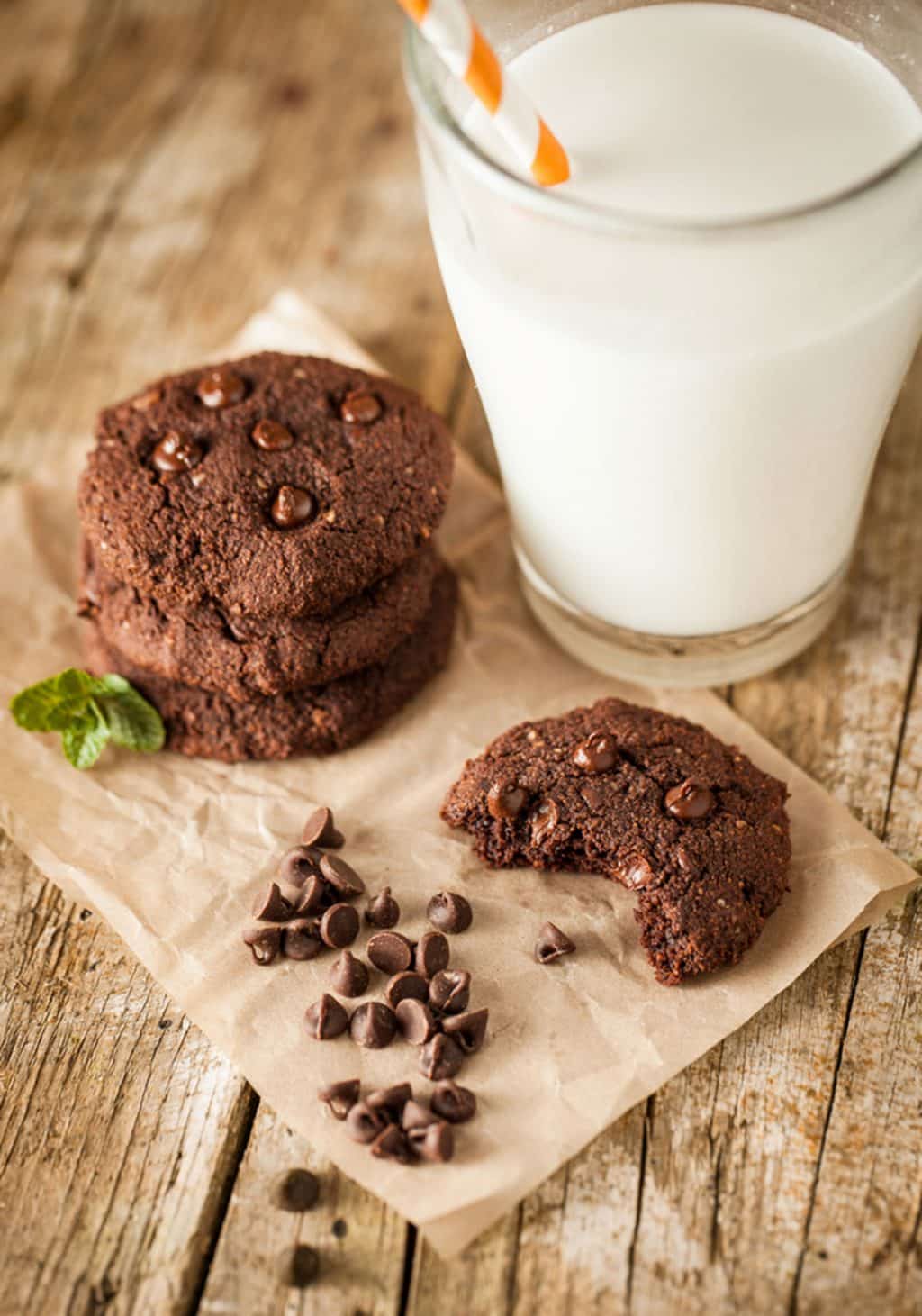
Could coconut milk be bad for you?
What could be wrong with a food that has such an impressive nutritional profile?
In a nutshell, it depends on what’s in your coconut milk and your physiology. So, here are a few things to consider before you try coconut milk.
Do you react to coconuts?
Although very rare, some people may not be able to tolerate coconuts or coconut milk (even the homemade version). This could be because they are reacting to:
- Either the sorbitol (alcohol sugar) naturally present in coconut flesh.
- Or MCTs – in very rare instances, these fatty acids can promote the secretion of IgA antibodies in the gut (specifically in the Peyer’s patches which are involved in the development of immunity to antigens).
Ingredients to watch out for
1. Bisphenol-A (BPA)
Since the 1950s, the chemical BPA has been used in various consumer goods including reusable drink containers and in the lining of most metal cans used for canned foods. In a way, BPA acts like a nasty copycat. It mimics the estrogen (a hormone) in our body and disturbs the delicate hormone balance.
In fact, research suggests that it could:
- Disrupt the hormone system and increase the risks of cancers of the breast and reproductive system
- Increase the risks of infertility
- Cause early puberty
- Increase blood pressure
- Cause neurological issues (adverse health effects on the brain especially in children)
- Lead to behavior changes and developmental disorders
- Cause asthma
Unfortunately, BPA exposure is very common – a CDC report found BPA in the urine of 93% of adults. You see, this chemical loves fatty, salty, and acidic foods. That’s why BPA leaches considerably in:
- Coconut milk (the canned version ranks number one on the list of canned foods with the highest level of BPA!)
- Peeled and pureed tomatoes
- Preserved vegetables
So, you could simply get a certified BPA-free coconut milk brand. Right?
Not necessarily. Have you ever wondered what is replacing the BPA in BPA-free cans and cartons?
Unfortunately, most of the companies I contacted either told me that the linings they used were a trade secret… Or that they would contact me once they’ve heard from their supplier. Good thing I didn’t hold my breath!
It turns out that BPA has a few evil siblings including:
- Bisphenol-S and -F (or BPS and BPF) – these chemicals don’t leach in foods as much as BPA but they still mess with our hormones.
- Titanium dioxide – Exposure to nanoparticles of titanium dioxide could reduce nutrient absorption in the small intestine and thus weaken the immune system. This chemical has also been linked to organ dysfunction, certain cancers, inflammation and Crohn’s disease.
[color-box color=”main”]Verdict: Whether you have health issues or not, stay away from any type of bisphenols and titanium dioxide.[/color-box]
2. Guar gum or gellan gum
This food additive is derived from the guar bean, also known as the Indian cluster bean that grows in India and Pakistan. Some studies indicate that supplementing with guar gum could improve blood sugar control and reduce insulin requirements in insulin-dependent patients. However, guar gum also causes gastrointestinal side effects like increased bloating and gas. Plus, people with soy allergies can react to this additive.
[color-box color=”main”]Verdict: Avoid guar gum if you have small intestinal bacterial overgrowth, a very delicate digestive system or soy allergy.[/color-box]
3. Cellulose gum
Food manufacturers usually add cellulose to coconut milk in order to thicken and stabilize it. Sounds good so far. But do you know what cellulose usually refer to?
Well, cellulose gum is obtained from cotton, wood pulp, or saw dust. Some people might tell you that cellulose from celery is no different than cellulose from wood. Yes, I know that cellulose is the insoluble substance that makes up the walls of plant cells. But the issue with cellulose as a food additive is the way it is chemically processed before being used as a thickener.
You see, to make it soluble, the cellulose will be treated with sodium hydroxide. Yes, that’s the very same caustic soda or lye, that is used to make soaps… It is then treated with chloroacetic acid – short-term exposure to this substance can cause:
- Severe damage to the skin, eyes, respiratory tract, and mucous membranes
- Depression of the central nervous system in humans.

That’s not all. According to a study published in the journal Inflammatory Bowel Diseases, “[carboxymethyl cellulose] is an ideal suspect to account for the rise of IBD in the 20th century.” The scientists explain that cellulose:
- Promotes massive bacterial overgrowth
- Inflammation in the gut
- Damage the protective mucus barrier of the small intestine
Beware of the other names of cellulose gum:
- Carboxymethyl cellulose
- Microcrystalline Cellulose
- MCC
[color-box color=”main”]Verdict: Avoid especially if you have a delicate digestive system.[/color-box]
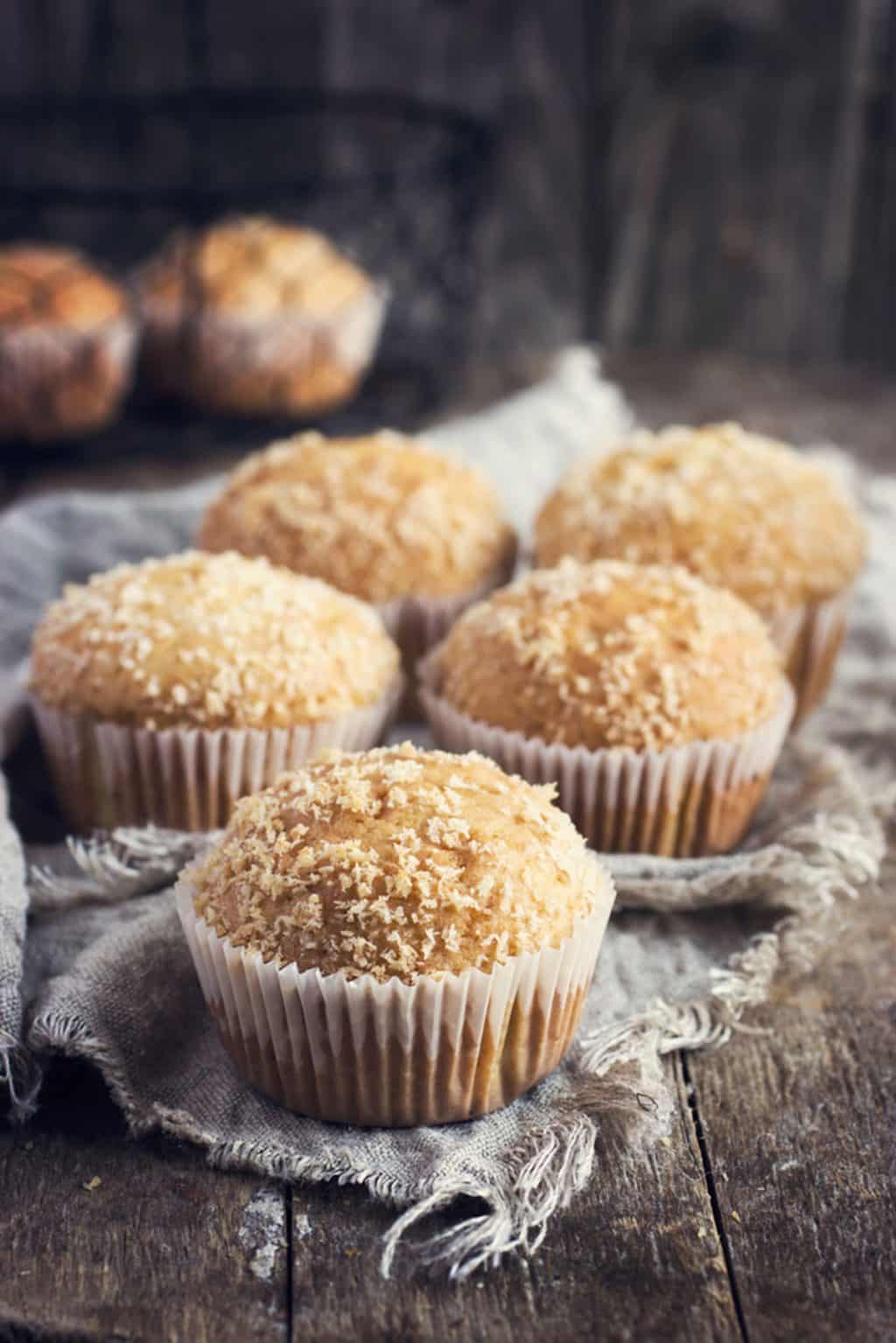
4. Sodium metabisulphite
This salt acts as a preservative and prevents discoloration of the coconut milk. Seems harmless enough… except that there are many people who react to added sulfites.
[color-box color=”main”] Verdict:If you can hunt down sulfite-free versions of your favorite munchies, why not go the extra mile for coconut milk? [/color-box]
5. Carrageenan
Extracted from red algae, this thickener and stabilizer is often found in boxed coconut milk. Traditionally, seaweeds that contained carrageenan were used in food manufacturing due to their gelling properties. And that was fine. However, the refined and highly processed carrageenan used nowadays has been linked to:
- Increased intestinal permeability
- Inflammation in the gut
- Ulcerations
- Colitis-like symptoms
- Increased risks of cancer
[color-box color=”main”]Verdict: The jury is still out on this one since more studies are needed. However, since this food additive has questionable adverse effects, just avoid it to be on the safe side.[/color-box]
What are you supposed to use instead? Keep reading to find out.
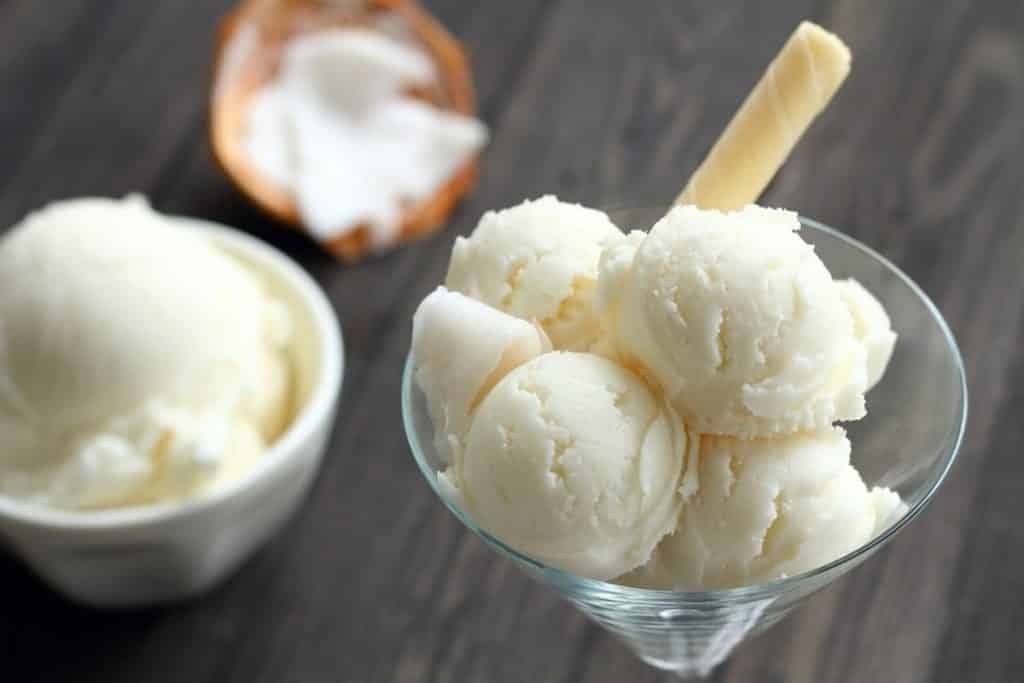
Homemade coconut milk: A worthwhile pursuit
‘Next, she’ll tell me to produce my own food and make my own butter!’
New patients always have this look on their face when I advise them to skip store-bought coconut milk and make their own instead.
I know, making coconut milk from scratch may sound like a daunting task. But, as you’ll discover in the video below, homemade coconut milk is super easy to make. Plus, the homemade version is so much tastier than the store brands. In fact, I’m quite sure you won’t even want to go back to commercial coconut milk once you’ve tasted the real thing.
Bonus: Making coconut milk at home will help you stretch your budget!
If you have access to fresh coconuts, use these instead of the shredded version: the milk will be much tastier.
Fun fact: I live on a tropical island. And yes, we have loads of coconuts but I get mine from the market. Climbing coconut trees is a fun option but sadly, I don’t have the necessary skills.
Should you throw away the coconut pulp that’s left?
Definitely not: just use it to make coconut flour. Or you could also leave the pulp in the milk (that is, no need to strain). I rarely strain the milk and use it (with the pulp) to make my smoothies, puddings, and gravies more filling. Or you could also strain the pulp and add it to soups, sauces, and desserts as needed.
And how should you store coconut milk?
Preparing some homemade coconut milk? Just make a big batch – I typically make coconut milk using five coconuts in one go. I then keep some in the fridge and the rest in mason jars. If you opt for mason jars, remember to keep room for expansion – about one-third empty will do. Trust me, it’s very sad to have to throw this nutrient-packed liquid just because it expanded and caused the jar to crack open.
I also keep some coconut milk in ice cube trays – once the milk has frozen, I just add them to a baggie. This way, I have little pre-measured portions of coconut milk (instead of having to defrost a whole jar) to add to my morning coffee or smoothies.
15 absolutely delicious ways to use coconut milk
One the things I like the most about coconut milk is that it adds a magic, creamy tropical touch to almost any dish. Not sure what I mean? Check out the following recipes.
[color-box color=”main”]Note: Most of these recipes call for store-bought coconut milk – use homemade instead if possible.[/color-box]

Breakfast
Tip: Avoid ingesting essential oil unless you’ve done so before without any issue.
Tip: If you tolerate grass-fed butter, use that instead of coconut oil. The crepes will be much tastier.
Tip: Avoid using oil sprays – just brush the pan with some melted coconut oil instead.
Tip: Choose a brand that contains no alcohol or propylene glycol if you have autoimmune or gut issues.

Lunch
Coconut Lime Baked Chicken with Coconut Mango Sticky Rice
Tip: Use tapioca starch or arrowroot flour instead of cornstarch.
Sesame Salmon Balls with Ginger Tahini Dipping Sauce
Tip: Can’t tolerate sesame seeds? Use chia seeds instead.

Dinner
Tip: Use tapioca starch or arrowroot flour instead of potato starch.
Red Cashew Coconut Curry Cauliflower Rice
Tip: For a complete meal, serve with some leftover beef strips or sauté some chicken before adding the cauliflower.
Cauliflower Soup with Coconut Milk
Tip: Use full-fat bone and vegetable broth instead of (tasteless) fat-free vegetable stock.
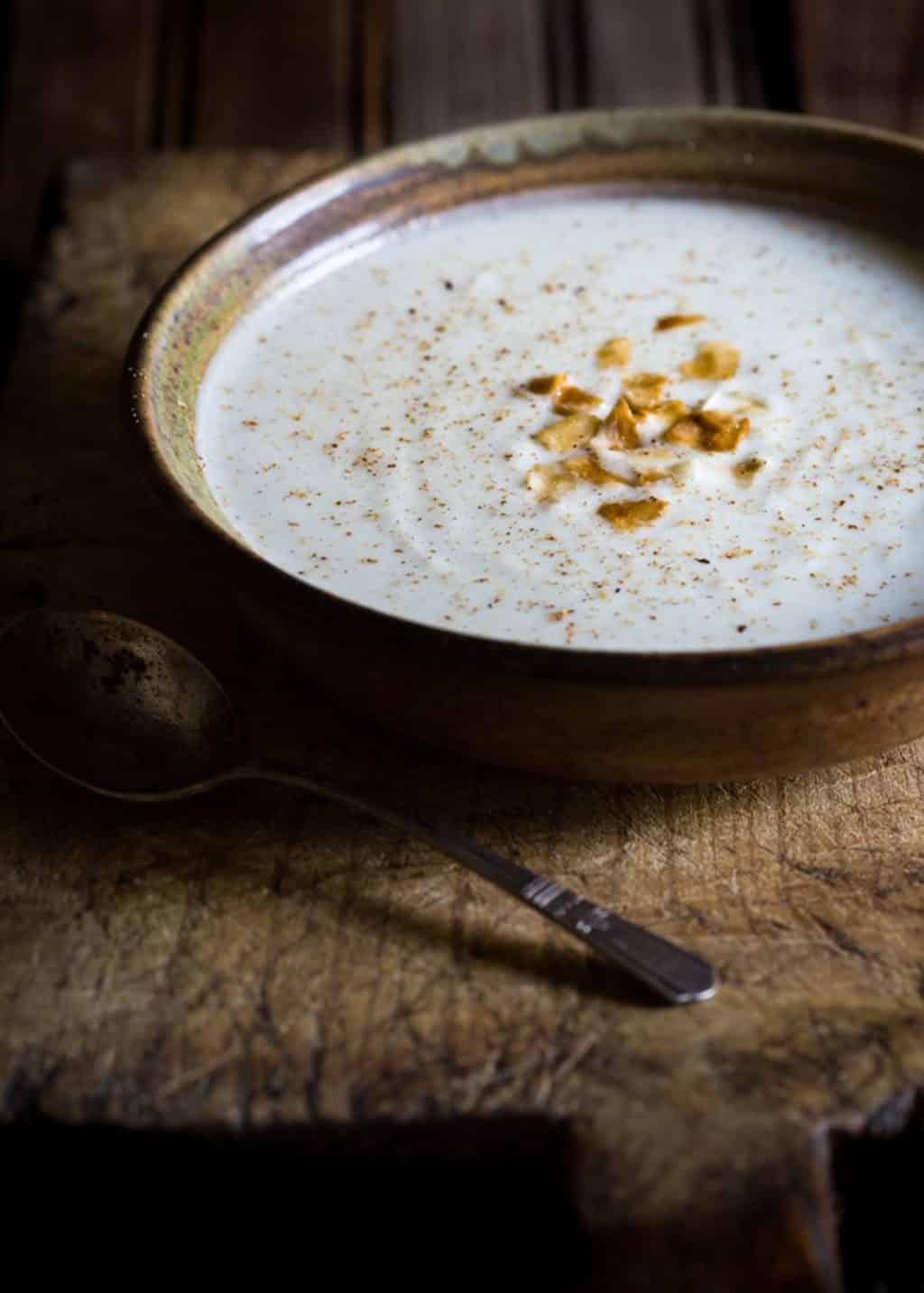
Snacks
Tip: We don’t have any blueberries here so I used some ripe mangoes and the muffins were ter-ri-fic!
Tip: I found these bars to be a bit too sweet so I used only half the amount listed in the recipe.
Coconut Flour Shortcake Recipe
Tip: If you don’t have any coconut cream, just use some coconut milk. Or you can just skip it altogether.
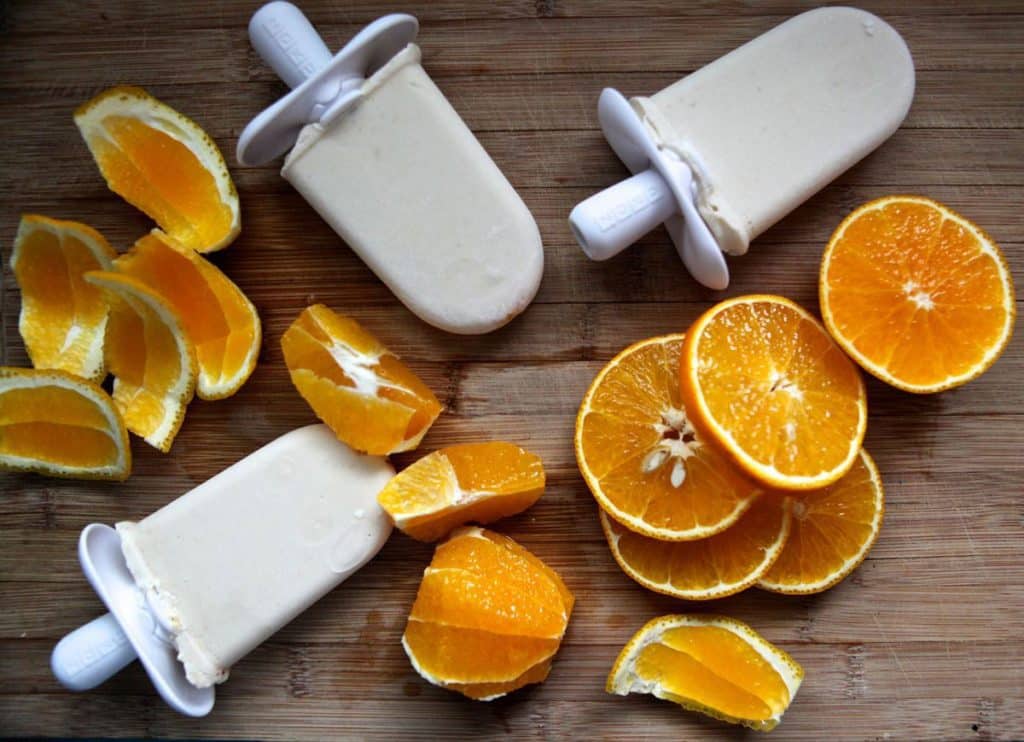
Desserts
Tip: Add a pinch of cinnamon powder for a different twist on this recipe.
Simple Coconut Milk Chocolate Mousse
Tip: Add a teaspoon of chopped frozen raspberries for some natural sweetness.
Tip: The coconut sugar is optional.
Now I’d like to hear from you – what’s your favorite way of using coconut milk? Share in the comments below or on Bembu’s facebook page.




